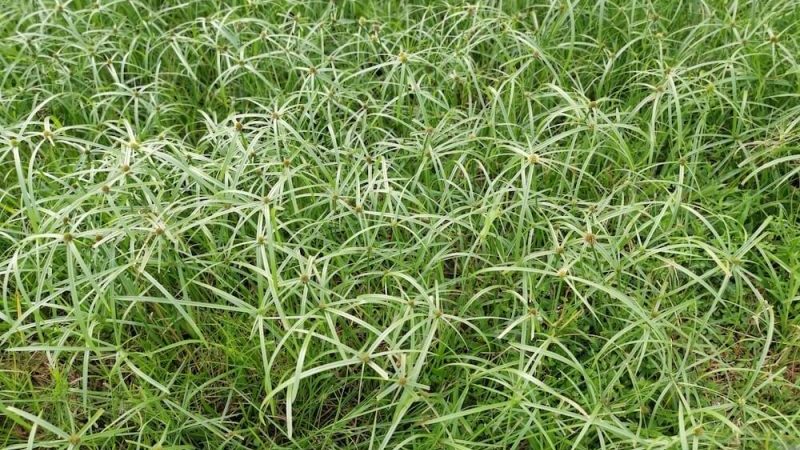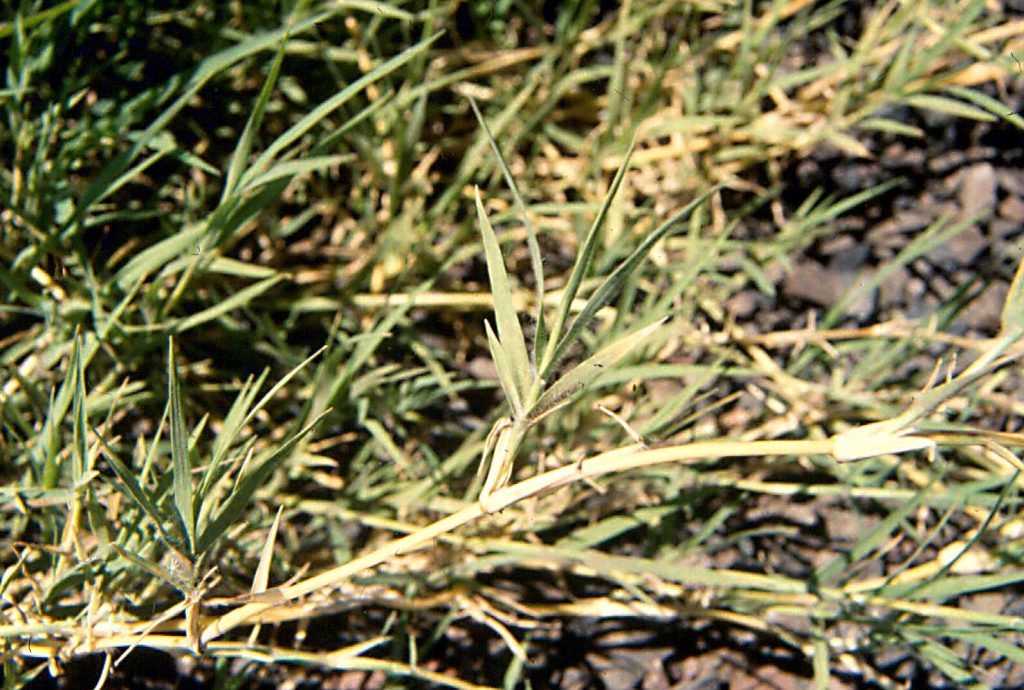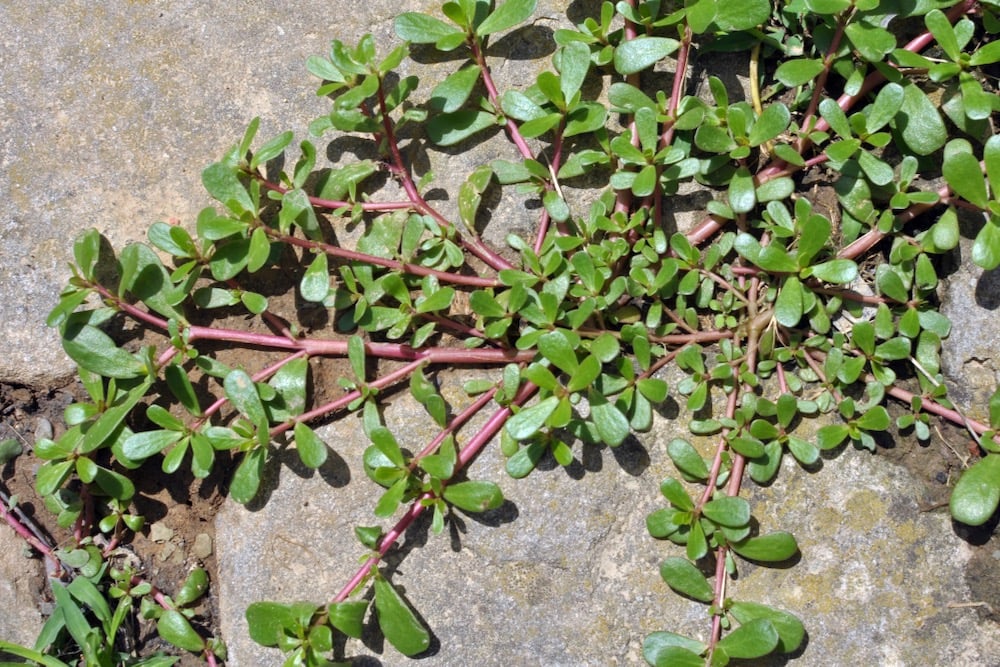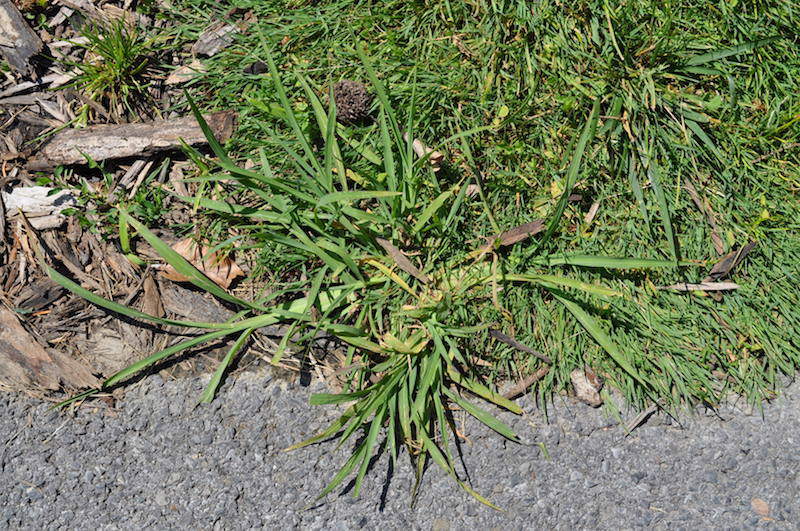Our Approach to Weed Control
Weeds can quickly overrun lawns, gardens, and flower beds, negatively impacting the aesthetics and health of our landscapes. The best defense against an excessive weed invasion is a healthy, thriving landscape that leaves no room or resources for weeds to take hold and flourish. Chip-N-Dale’s preferred method of weed control is handpicking any weeds as soon as they sprout, which avoids the need for chemical countermeasures and prevents the spread of weed seeds. If more serious weed control becomes necessary, Chip-N-Dale’s can employ the use of pre and post emergence herbicide measures as explained below.
Pre emergence weed control refers to the application of herbicides in landscape areas before weed seeds germinate and emerge from the soil. Southern Nevada’s sandy and gravelly soils are often reservoirs for dormant weed seeds, waiting for favorable conditions to germinate and thrive. By applying pre emergence herbicides, the growth and establishment of weed seedlings can be effectively hindered. These herbicides create a protective barrier in the soil, preventing weed seeds from germinating and disrupting their life cycle. This proactive approach significantly reduces the overall weed population and minimizes the need for reactive treatments.
While pre emergence herbicides act as a proactive measure, post emergence weed control methods target weeds that have already emerged from the soil. This reactive approach is necessary when some weeds manage to break through the pre emergence barrier or when new weed seeds are brought in by wind, animals, or foot traffic. Post emergence techniques complement pre emergence strategies and help to eradicate weeds that have already taken root.
By using pre emergence herbicides as a preventive measure and post emergence herbicides for targeted removal, property owners and landscapers can achieve long-term, sustainable weed control. Furthermore, the implementation of other horticultural practices, such as proper irrigation, mowing lawns to the correct height, and regular removal of weed debris, can all help to prevent weed establishment. By creating an unfavorable environment for weed growth and cultivating healthy lawns or plant beds, the need for herbicide use can be minimized.
Below are some of the more common weeds found in our landscapes:

Dandelion
Dandelions are a common sight in Vegas lawns and gardens. These hardy plants have distinctive bright yellow flowers with fluffy, globe-like seed heads that transform into white, feathery puffs when mature. Dandelions arrive in early spring and can continue to thrive throughout the year, thanks to their rapid growth and ability to produce seeds in abundance. A single dandelion plant can produce hundreds of seeds that disperse easily with the wind, contributing to their rapid spread. To prevent dandelions from taking over your landscape, regular maintenance is crucial. Cultivating a dense and healthy lawn through proper mowing, watering, fertilization, and aeration can suppress dandelion growth by limiting space and resources. In case of established dandelion infestations, manual removal by digging deep to extract the taproot is effective. Alternatively, applying selective broadleaf herbicides can target dandelions without harming desirable plants. Please be aware that if you remove only the leafy above-ground portion and not the taproot, regrowth is almost assured.

Nutgrass
Nutgrass, also known as nutsedge, has slender, triangular stems and leaves that resemble grass, making it challenging to distinguish from regular turf. Nutgrass typically arrives in the late spring or early summer when the soil is warm, providing optimal conditions for its growth. Once established, nutgrass can spread rapidly, especially in areas with poor drainage. Each plant can produce numerous tubers, or underground nut-like structures, which sprout new shoots, leading to its aggressive spread. In cases of infestation, manual removal by digging out the entire plant, including the tubers, is necessary to prevent regrowth.

Bermuda Grass
Bermuda grass, a warm-season perennial grass commonly used for lawns and sports fields, can quickly become an aggressive and invasive weed in unwanted areas. It has fine-textured, green blades that form dense, resilient mats. Bermuda grass usually arrives in the spring when temperatures start to rise, and its growth accelerates during the hot summer months. Once established, Bermuda grass spreads vigorously through stolons (above-ground runners) and rhizomes (underground stems). These traits enable it to rapidly overtake flower beds, vegetable gardens, and other landscape areas, competing with desirable plants for space and nutrients. To prevent and control Bermuda grass as a weed, regular lawn maintenance is essential. Keeping lawn edges well-defined and installing barriers, like metal or plastic edging, can help contain its spread. Hand-pulling small patches of Bermuda grass is effective, but it must be done thoroughly to ensure removal of all runners and rhizomes. For larger infestations, selective herbicides labeled for Bermuda grass control can be applied. However, it’s crucial to follow the product instructions carefully to avoid harming desirable plants nearby.

Purslane
Purslane (Portulaca oleracea) is a common weed with succulent, fleshy leaves that are paddle-shaped and often arranged in clusters. It can vary in color, ranging from green to reddish-brown. Purslane usually arrives in the late spring or early summer and thrives under warm, sunny conditions. Once established, it spreads rapidly through both seeds and stems. Removing the plants by hand before they set seeds can help prevent its spread. Applying mulch to garden beds can also suppress purslane growth and limit its access to sunlight.

Crabgrass
Crabgrass has distinctive light green, spreading stems with slender, finger-like blades that resemble crab legs, hence its name. Crabgrass typically arrives in the spring when soil temperatures warm up, making it a warm-season annual weed. Once established, crabgrass spreads rapidly through prolific seed production and a prostrate growth habit that enables it to outcompete desirable turfgrass and plants. Maintaining a healthy and dense lawn through regular mowing, adequate fertilization, and appropriate watering can help limit crabgrass germination and growth.
